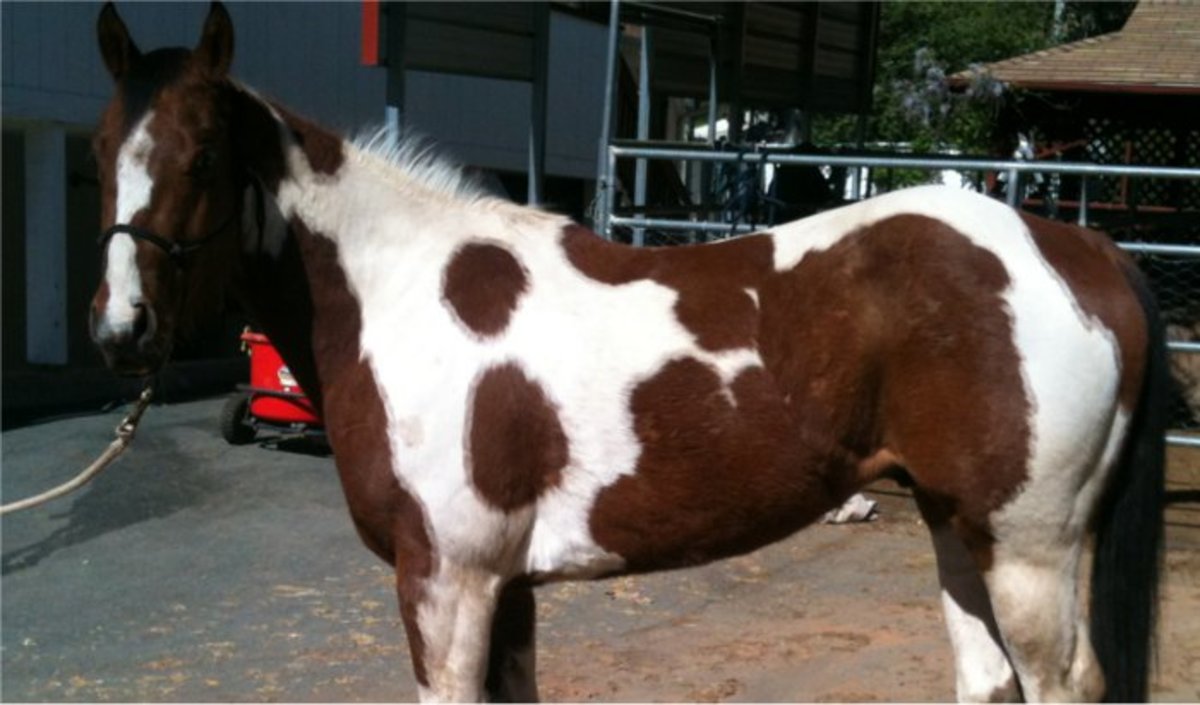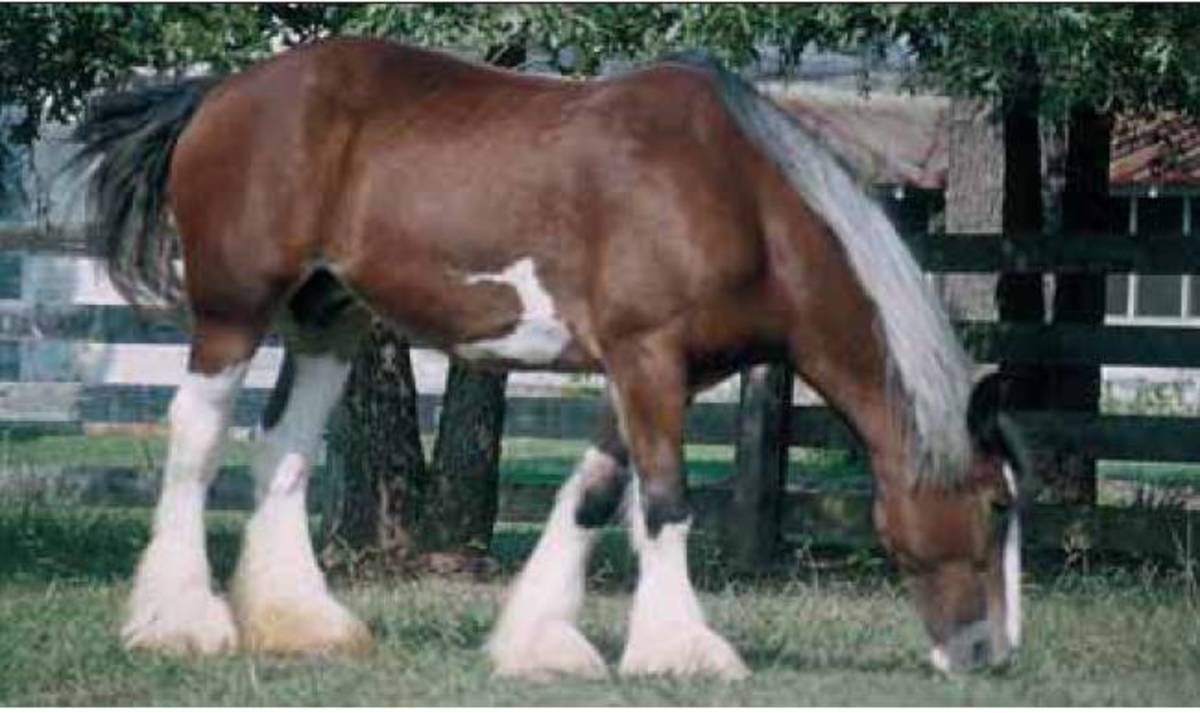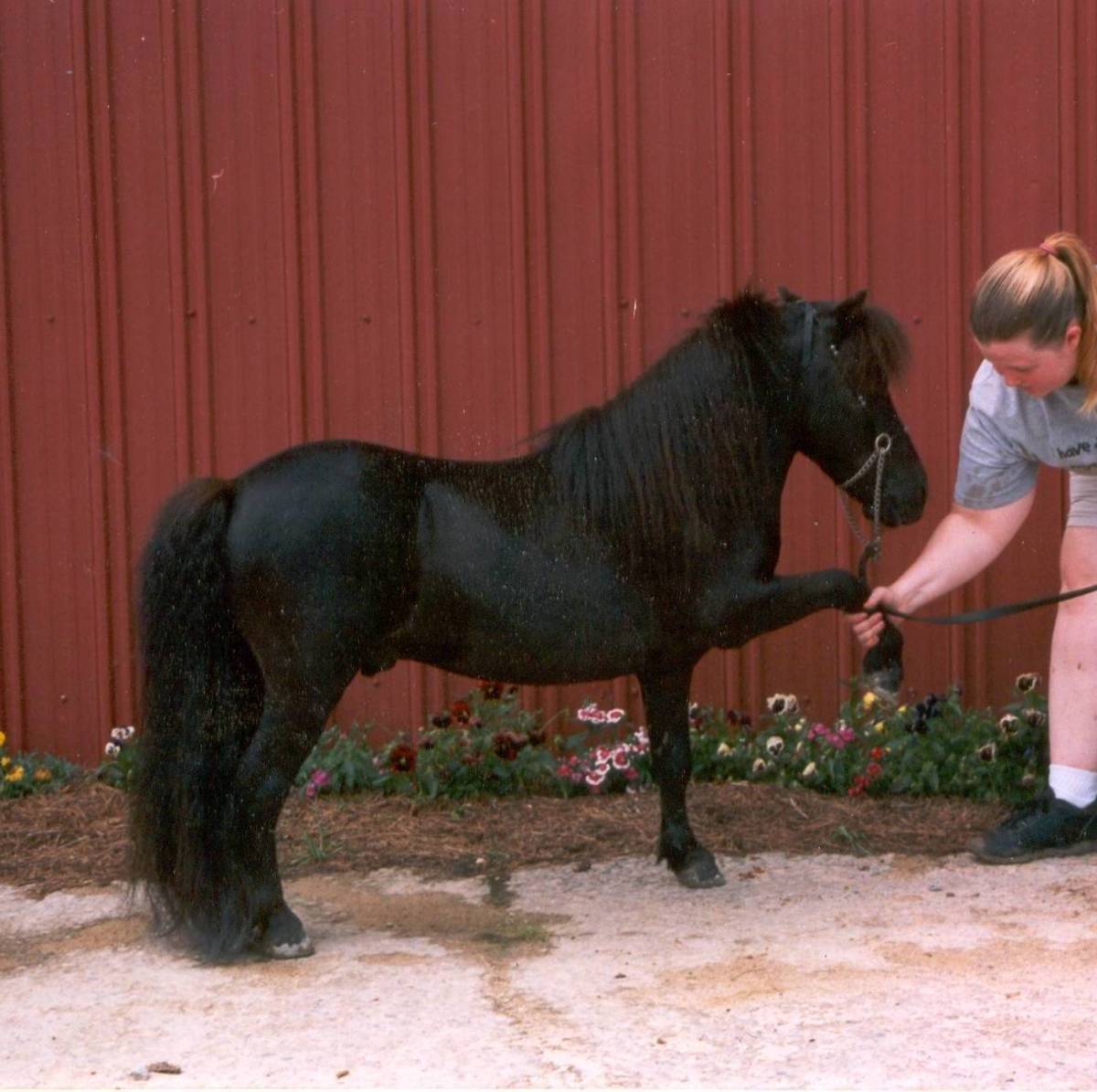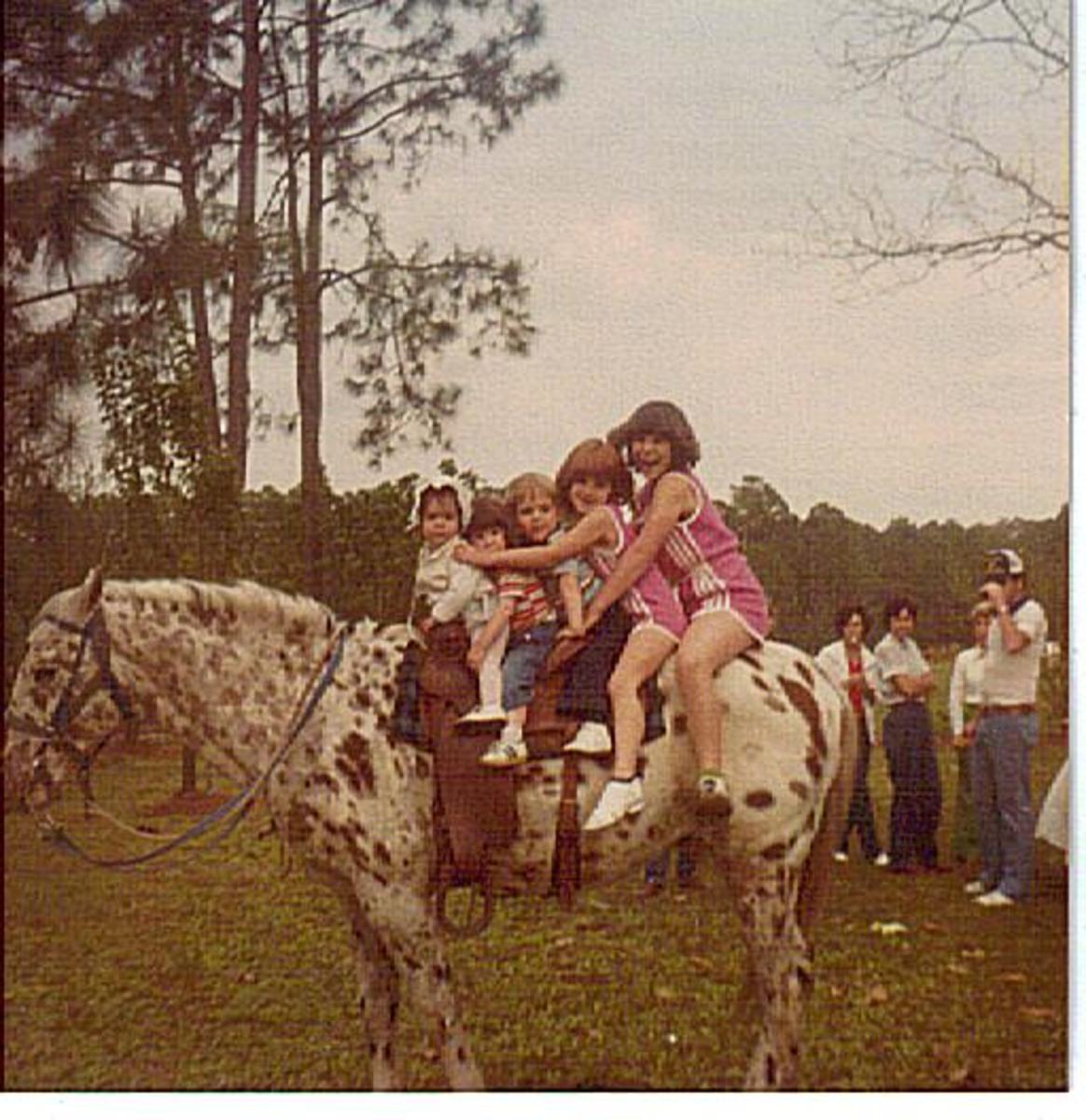Four Common Equine Skin Ailments
Spring, Summer, Fall and Winter, too
Skin ailments can cause your horse much misery and even secondary infections if not attended to promptly. Late spring, summer and early fall is when you horse is most likely to suffer from one of these itchy ailments because of the increased insect population, and the heat and humidity. But, a wet, muddy winter can also provide an environment for mud fever, scratches or grease heel.
Allergic dermatitis
Allergic dermatitis, also known as summer itch, can cause intense itching and rubbing. Often the horse attempts to relieve itself of the discomfort by scratching and biting at the area until the skin is raw and becomes infected. Red, flaky skin is a sign of dermatitis. Often the horse will break out in bumps that ooze and leave a crusty scab.
First you must do is find out the cause of the dermatitis. In warm weather it is often caused by an allergic reaction to insect bites. Other causes include onchocerca cervicalis (a microscopic parasitic larvae), something the horse has eaten, or toxins in its environment.
When summer rolls around do all you can to protect your horse from the insects - repellents, fly sheet, stalling and all the means recommended for reducing mosquito and fly populations.
Have your vet examine your horse and take a skin sample to see if it is an external parasite on the skin like onchocerca cervicalis or a fungus. A bath in a mild soap can help relieve some of the itching. The vet will sometimes prescribe an antihistamine in severe cases, which alleviates the misery which you take care of removing the cause.
Ringworm
Ringworm, also known as girth itch, is causes by a fungus and is contagious, even to people. You can usually identify it by the circular bare patches on your horse's coat. It is most often found on the head and neck, but can be found on any part of the body. It doesn't always cause itching, but sometimes it does.
Ringworm will often clear up by itself, but since it is so contagious if there are other horses at the same barn you should isolate the infected horse and treat it to prevent the other horses from catching it. It takes about two weeks to clear up with bathing in a fungicidal shampoo. Keep the infected horse's equipment separate from all other horses. Clean brushes, saddle pads, and other objects with a bleach solution to prevent re0infecting your horse.
Your vet can examine your horse and take a skin sample to be sure that the horse does in fact have ringworm.
Grease Heel, Scratches or Mud Fever
Grease heel, or scratches, also called mud fever are all names for the same condition. I call it crud. It is a type of dermatitis on the back of the pastern. It can especially be a problem with draft horses, especially those horses with a lot of feathering. It is most often found on the hind legs. The long hair traps mud and moisture, which promotes the growth of the bacteria Dermatophilus congolensis and Staphylococcus spp. Fungus and chorioptic mange mites are also blamed for the disease.
Symptoms are inflammation and oozing fluid that becomes crusty and scabby. The scabs are bumps sometimes called "grapes." By the time we notice it, it probably has been there a while.
To treat grease heel, you will need to clip the long hair that grows on the back of the pastern and fetlock. Scrub the area with warm water and mild soap to remove the scabs. A good home remedy for mild cases is to cover the affected area with an ointment, which is a mixture of 1 part Neosporin, 1 part cortisone cream and 2 parts zinc oxide (baby diaper ointment). Keep the horse in a dry and clean environment. In advanced cases the vet will usually prescribe an antibiotic-corticosteroid ointment or even give the horse antibiotic injections. If left untreated it will spread around the coronet band to the front of the foot.
My old half-Arab mare gets this every summer. She has long feathering for a light horse. I treat it as described here. Keeping it dry and clean seems be our best defense. I know to watch for it now and start coating the back of her pastern and fetlock with zinc oxide as soon as I notice any inflammation. The baby diaper ointment keeps the area dry and provides a shield against the infection.
Saddle Sores
Saddle sores can easily be prevented by good grooming and using properly fitted tack. The cause is friction between the saddle, or harness, and the horse's skin. Dirt or grit on the horses skin while wearing the tack is like rubbing the animal's skin with sandpaper until the skin becomes inflamed and sore, sometimes even rare and bleeding.
If your horse has developed a saddle sore you need to look at how your saddle fits. Many tack stores have someone who will come evaluate the fit of your saddle on your horse. When you put the saddle on your horse lift up one the center of the pad at the front of the saddle so it does not bind tight on the horse from the weight of the saddle. Be sure to clean the pad after every use. Also be sure your bridle, martingale, or anything you use fits your horse and is not rubbing since a sore can develop anyplace tack comes into contact with the horse's skin. Some horse's conformation make saddle fit difficult. Saddle pads with extra thickness or a cut-out in the center can sometimes take the pressure off the horses back to prevent saddle sores.
The first line of defense toward healing a saddle sore is total rest until the sore heals. If you continue work it can develop into bursitis or even damage the bone. Massaging with witch hazel will help bring healing circulation to the area. Keep open wounds clean and apply an antibacterial salve to it. Also use a fly repellent to keep flies off the wound.
If the sore gets worse have your veterinarian look at it. Sometimes in severe cases surgery may be required.
This content is accurate and true to the best of the author’s knowledge and is not meant to substitute for formal and individualized advice from a qualified professional.
© 2008 Donna Campbell Smith









